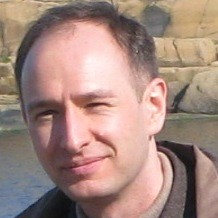3D Information Technologies for Tangible and Intangible Cultural Heritage
A special issue of Applied Sciences (ISSN 2076-3417). This special issue belongs to the section "Computing and Artificial Intelligence".
Deadline for manuscript submissions: 31 July 2024 | Viewed by 16791
Special Issue Editors
Interests: software engineering; project management; 3D information technology; 3D motion acquisition and analysis; human-computer interaction
Special Issues, Collections and Topics in MDPI journals
Interests: computer graphics; 3D scanning and visualization; 3D-imaging
Special Issues, Collections and Topics in MDPI journals
Special Issue Information
Dear Colleagues,
This Special Issue of Applied Sciences, entitled “3D Information Technologies for Tangible and Intangible Cultural Heritage”, will present the most recent advances and developments in the use of digital 3D technologies for the preservation of cultural heritage, both tangible and intangible. All interested authors are invited to submit high-quality papers for possible publication in this Special Issue that highlight the use of 3D digital technology to record, document, research and protect cultural heritage, as well as those focused on making such documentation available online.
All papers must present original, previously unpublished work and will be subject to the normal standards and peer-review process of this journal. Potential topics include but are not limited to:
- 3D scanning of objects and other elements (e.g. dances, performances and folk customs) of cultural heritage, both tangible and intangible;
- 3D information technologies for research of cultural heritage;
- Virtual and augmented reality technologies in cultural heritage research, presentation and dissemination;
- Virtual and interactive exhibitions, museums and performances;
- Virtual 3D historical worlds;
- 3D modelling and visualisation of historical artefacts and habits;
- 3D digitalisation technologies, devices and methods;
- Digital reconstruction of damaged historical artefacts and buildings;
- Information technologies for documenting archaeological sites and artefacts;
- Motion capture and similar techniques for cultural heritage data acquisition;
- 3D printing of models of historical objects;
- Digital simulations of the process of development and deterioration of buildings, settlements or cities;
- Digital archives of 3D models of cultural heritage;
- Visualization and dissemination of digital 3D models of historical artefacts and buildings;
- Historical digital games for cultural heritage popularisation;
- 3D information technologies in the renovation of historical objects.
Prof. Dr. Marek Milosz
Dr. Jacek Kęsik
Guest Editors
Manuscript Submission Information
Manuscripts should be submitted online at www.mdpi.com by registering and logging in to this website. Once you are registered, click here to go to the submission form. Manuscripts can be submitted until the deadline. All submissions that pass pre-check are peer-reviewed. Accepted papers will be published continuously in the journal (as soon as accepted) and will be listed together on the special issue website. Research articles, review articles as well as short communications are invited. For planned papers, a title and short abstract (about 100 words) can be sent to the Editorial Office for announcement on this website.
Submitted manuscripts should not have been published previously, nor be under consideration for publication elsewhere (except conference proceedings papers). All manuscripts are thoroughly refereed through a single-blind peer-review process. A guide for authors and other relevant information for submission of manuscripts is available on the Instructions for Authors page. Applied Sciences is an international peer-reviewed open access semimonthly journal published by MDPI.
Please visit the Instructions for Authors page before submitting a manuscript. The Article Processing Charge (APC) for publication in this open access journal is 2400 CHF (Swiss Francs). Submitted papers should be well formatted and use good English. Authors may use MDPI's English editing service prior to publication or during author revisions.
Keywords
- IT in cultural heritage
- digital availability of cultural heritage
- 3D scanning and visualization
- motion capture for cultural heritage
- mixed reality
- 3D modelling
- cultural heritage dissemination
- 3D models archiving
- virtual reconstruction
- virtual presence
- modern exhibition techniques
- gamification in cultural heritage
- 3D printing
- games for cultural heritage promotion and education
- 3D techniques for research of cultural heritage






